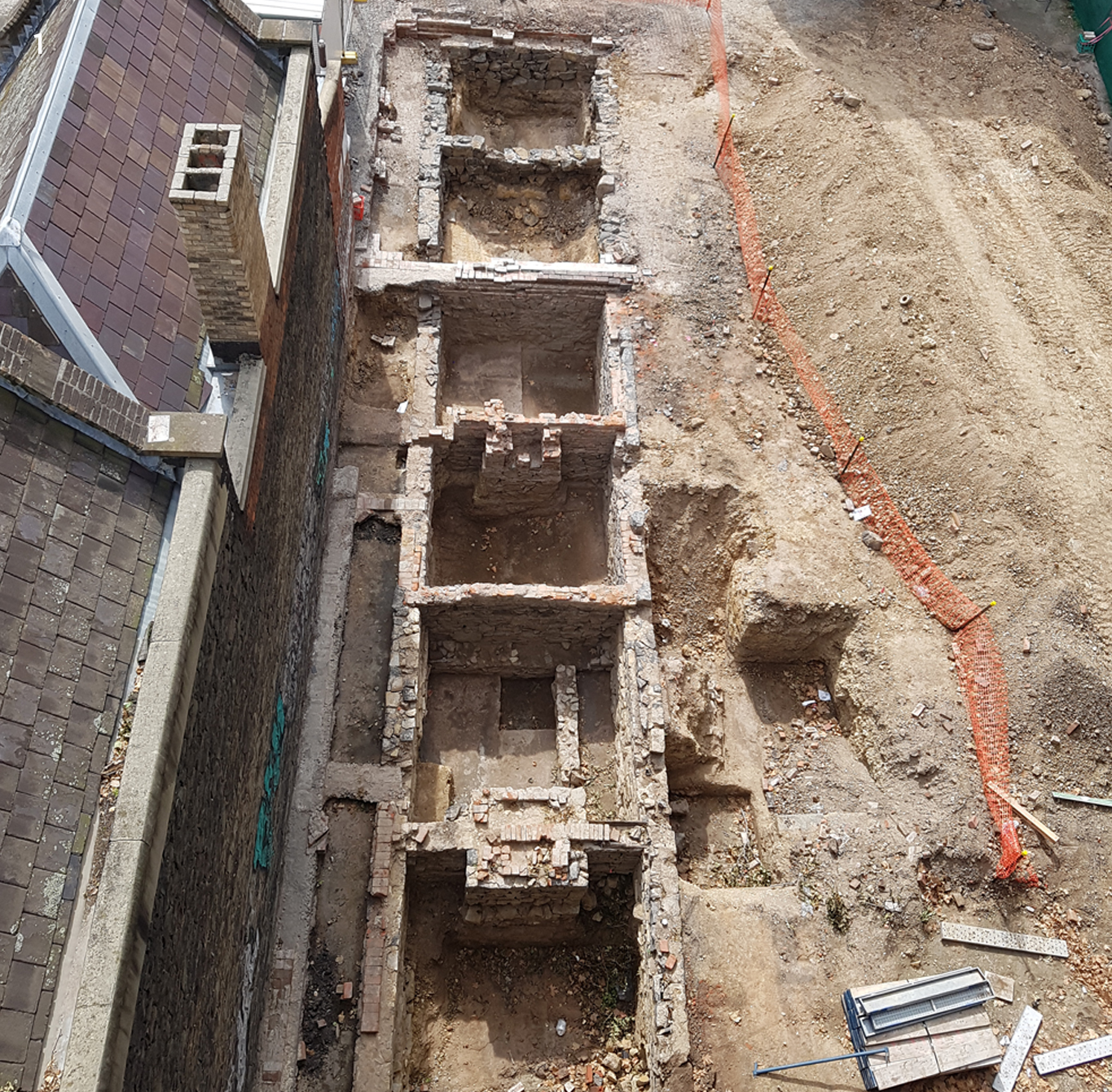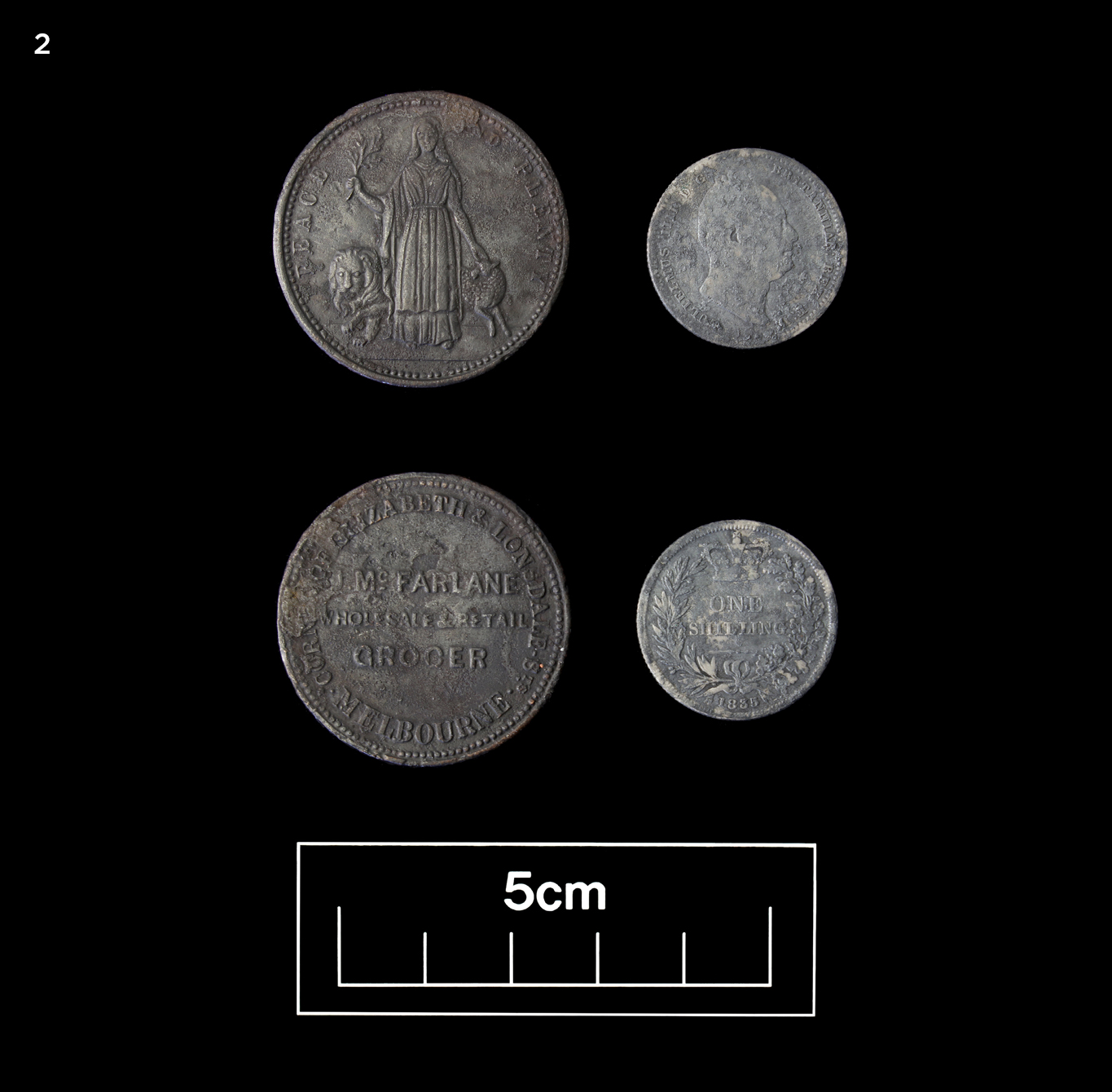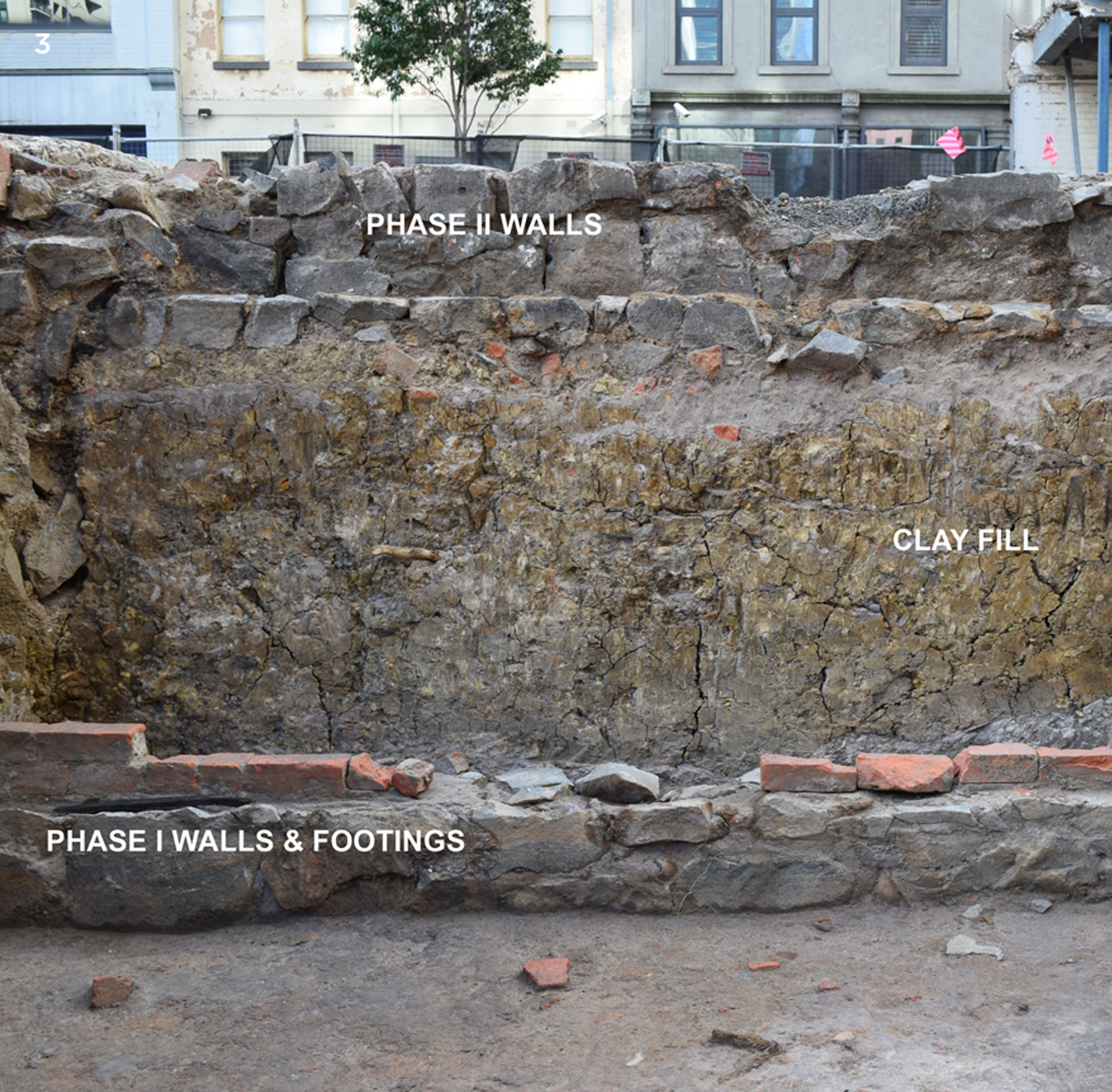Stop B1: Buried Block



Click on the above to listen to audio about the buried block
What lay below the clay
During excavations by archaeologists in 2017, the remains of many buildings along Jones Lane were revealed, not far below today’s current ground level. What surprised archaeologists was that two metres below the structures from the 1860s were the remains of buildings dating back to the early European settlement of the city. These were buried below a thick layer of yellow clay. The excavations uncovered extraordinary sets of dwellings and an array of rare artefacts, representing two distinct periods of occupation.
Inspiration to go deeper
Further investigation confirmed that this was a highly significant discovery about Melbourne’s CBD. It was evidence of a major change in the city’s street levels that occurred in 1854-1855. In order to address flooding in the area, the Melbourne City Council ordered that street and ground levels be raised by one to two meters. The council raised the streets levels of Little Lonsdale Street and Jones Lane, and the adjoining private property owners were forced to comply, demolishing and burying their homes and buildings with a thick layer of yellow clay.
A watershed moment
Those who did not immediately raise their properties faced water run-off from the now higher streets adjoining their properties which filled both land and buildings, not yet raised:
“Towards the close of last summer, the street and pavement were here raised several feet, and this large open space on the north side consequently made a hollow. No provision was made for either draining the water off, or filling up the place level with the road, and it has therefore become the reservoir for all the winter rains – in fact, a miniature Yan Yean.” (The Age Tuesday 11 September 1855 p. 6)
Findings unearthed
The archaeological remains beneath the clay in Jones Lane were well preserved and included original floor surfaces, bluestone walls, footings, windows, doorways, fireplace bases, brick walls, plaster, timber posts and numerous artefacts. The structural remains below the clay closely align with buildings depicted on the 1850s Bibbs map. This includes the bluestone footings of the original Wesleyan School House which was built in the 1850s and demolished in the 1860s.
Above the clay fill, post-1855 structural remains included nine well-preserved residences, some with intact bluestone cellars and fireplaces dating from the 1860s to the 1890s, with some houses built on top of the bluestone footings of earlier buildings.
Artefacts you can see today
The archaeological analysis revealed a unique set of artefacts that shed light into the various people and groups who lived and worked in Jones Lane and Little Lonsdale Street throughout the 19th century. The importance of the Jones Lane archaeological site is its preservation of structures and artefacts from two different time periods in Melbourne’s early history. Comparison between the sets of objects found above and below the clay illustrate the changing character of the laneways and the people who used them.
Visit the artefact display in the lobby of 130 Lonsdale Street and green space to view a selection of objects from both periods.
Uncover more about the buried block here
Image References
- Six of the small residences along Jones Lane, beside the Wesley Church Manse, after excavation in 2017, facing north. Source: Dr Vincent Clark & Associates
- An 1835 British shilling and retailer’s token both found at a Jones Lane residence. The token was issued in 1851 by J. Mc Farlane, Grocer, Wholesale and Retail, Elizabeth and Lonsdale Streets.These types of tokens were put into circulation to cope with a shortage of low denomination currency in Australia in the early to mid- 19th century. They were issued by individuals and businesses and, although not legal tender, the British Government, unable to fill the gap, turned a blind eye. Source: Dr Vincent Clark & Associates
- One metre thick layer of clay fill between the Phase I (pre-1854) and Phase II (1855-1900) walls of Residence 7, Jones Lane. Source: Dr Vincent Clark & Associates